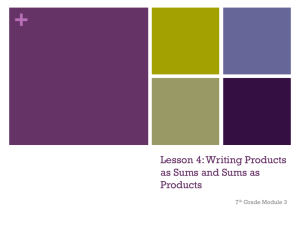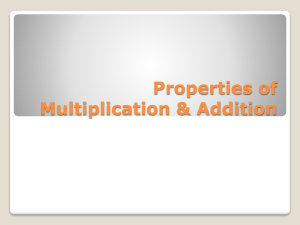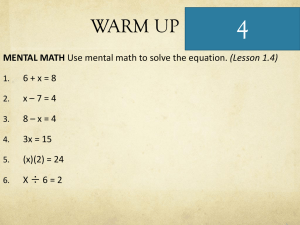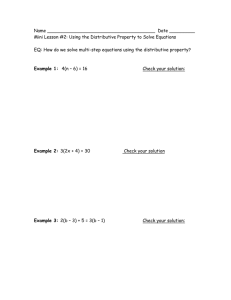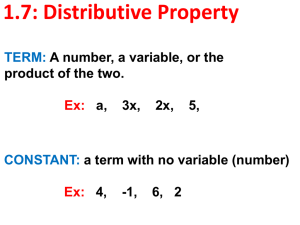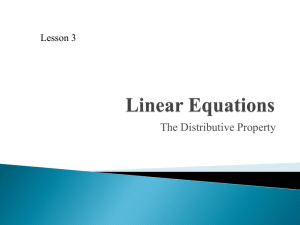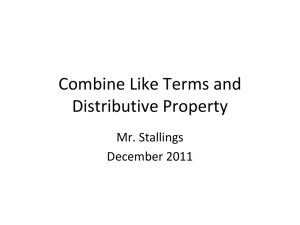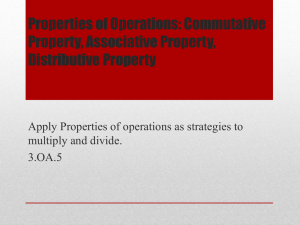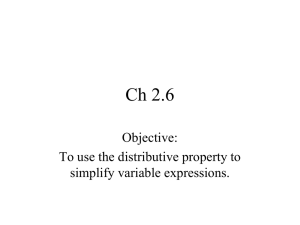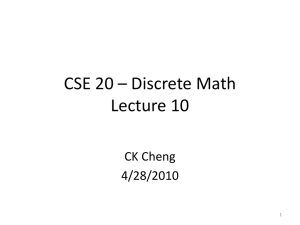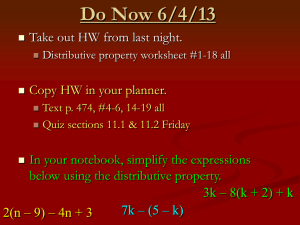7th Grade mod 3 les 3
advertisement
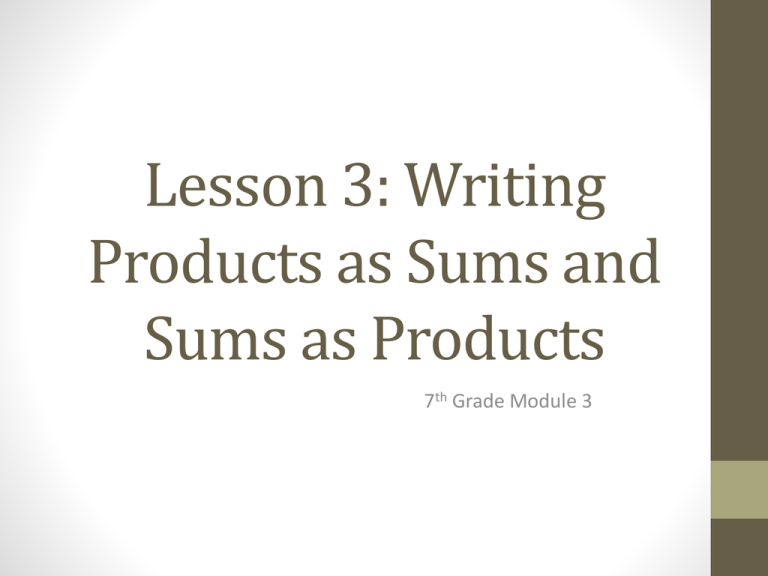
Lesson 3: Writing Products as Sums and Sums as Products 7th Grade Module 3 Opening Exercise • Solve the problem using a tape diagram. A sum of money was shared between George and Brian in a ratio of 3 : 4 If the sum of money was $56.00, how much did George get? Vocabulary • Array: • An arrangement of objects, pictures or numbers in rows and columns. Example 1 • Represent 3 + 2 using a tape diagram. • Represent x + 2 using a tape diagram. Example 1 • Draw a rectangular array for 3(3+2) • Draw an array for 3(x+2) Vocabulary- Key Term • Distributive Property: • The distributive property can be written as the identity a(b + c) = ab + ac for all numbers a, b, and c. Exercise 1 • Determine the area of each region using the distributive property. Example 2 – Draw a tape diagram to represent each expression. a. (x + y) +(x + y) +(x + y) a. (x + x + x) + (y + y + y) a. 3x + 3y a. 3(x + y) Example 3 • Find an equivalent expression by modeling with a rectangular array and applying the distributive property to the expression 5(8x + 3). • Substitute x = 2 into each expression and show they are equal. Exercise 2 • For parts a & b draw an array for each expression and apply the distributive property to expand each expression. Substitute the given numerical values to demonstrate equivalency. a. 2(x + 1), x = 5 • 2x + 2 • 12 a. 10(2c + 5), c = 1 • 20c + 50 • 70 Exercise 2 • For parts c and d, apply the distributive property. Substitute the given numerical values to demonstrate equivalency. c. 3(4f – 1), f = 2 • 12f – 3 • 21 c. 9(–3r –11), r = 10 • –27r – 99 • –369 Example 4 • Rewrite the expression (6x + 15) ÷ 3 in standard form using the distributive property. Exercise 3 • Rewrite the expressions in standard form. a. (2b + 12) ÷ 2 a. (20r – 8) ÷ 4 a. (49g – 7) ÷ 7 Example 5 • Expand the expression 4(x + y + z) Exercise 4 • Expand the expression from a product to a sum by removing grouping symbols using an area model and the repeated use of distributive property. • Or in other words – distribute the 3 and draw a diagram of it. 3(x + 2y + 5z) Example 6 • A square fountain area with side length s ft. is bordered by a single row of square tiles as shown. Express the total number of tiles needed in terms of s three different ways. (3 equivalent expressions) Summary • The distributive property is used to write a product as sums. A product of something and parenthesis that has a sum in it. • We can show the distributive property with rectangular arrays. The area of the area represents the the sum form, the length and the width represent the product form. Exit Ticket • Homework is Problem Set from Lesson 3. Alternate Exit Ticket 1. 6(2c + 11) 1. (80x – 72) ÷ 8 Homework Examples 4. Use the distributive property to write the products in standard form. a. 3(2x – 1) g. (40s + 100t) ÷ 10

